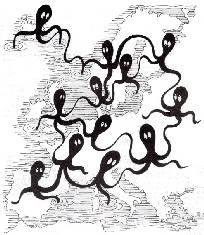
Figure 1: Hansen's octopi symbolising the networking of European resources
Those participating in trans-national organisations and projects have, over the years, developed as a community which partly sits outside the national organisations, government bodies, universities or museums that employ them. This community is bound together by networks, sometimes complex and sometimes, superficially, clear-cut. The creation of such networks is extended by technologies that allow virtual communities to develop. The ARENA network, for example, has grown over many years through personal contacts, developing a vision shared among like-minded people working with digital archives in different parts of Europe. The idea of a community developing ideas and disseminating information across Europe is not new; Henrik Jarl Hansen proposed the sharing of information at the CAA conference in Aarhus in 1992. Hansen (1992) represented the European archives community as a group of octopi reaching out to share information across national boundaries (Fig. 1). This vision has developed as the technical possibilities have expanded, allowing the possibility of creating an interoperable network supporting all kinds of virtual communities.

Figure 1: Hansen's octopi symbolising the networking of European resources
ARENA is itself a community, a community of organisations and individuals that have come together as a specific working network. This kind of community is strong because it has shared aims, but in many ways it extends beyond the work of the project. For all the individuals and organisations involved in the project this is a clear benefit. Once the community has developed its network it is a strong mesh that is difficult to break. Not only is ARENA a working network it is also a network of ideas. This process happens among many different networks across Europe that may be invigorated periodically by obtaining funding to work together on a specific project. This invigoration is only useful if funds are regularly available to networks, which is not the case. As there is no commitment from the European Union to turn projects into services, the positive effects of funding generally dissipates with time.
At the heart of the ARENA project is the technology that allows distributed computing via the Internet. Technologies that allow machines to talk to each other in locations distributed across Europe are available and have been demonstrated by the working ARENA portal. The potential for cross-border research is highlighted by Dam and Hansen's discussion (this issue) of the technologies utilised by ARENA (Austin et al. 2002). Elsewhere in this issue of Internet Archaeology Waller demonstrates how portal technologies are now moving away from building a single gateway, and how it is possible to provide a standard compliant portal tool kit which allows any number of web sites to incorporate tailored search interfaces. These tools also open up the way for increased personalisation of portal sites. In this respect the future presents us with a variety of options for sharing our information. The ARENA project has demonstrated that the technology is not the problem; it is how we manage the data.
© Internet Archaeology/Author(s)
University of York legal statements | Terms and Conditions
| File last updated: Tue Sep 27 2005